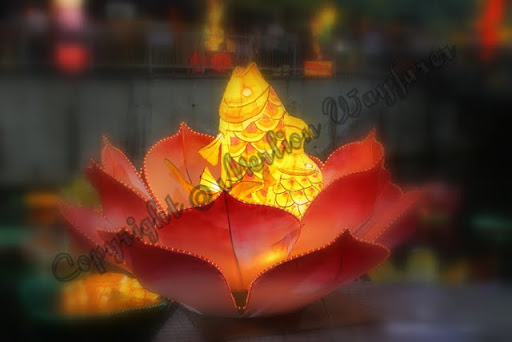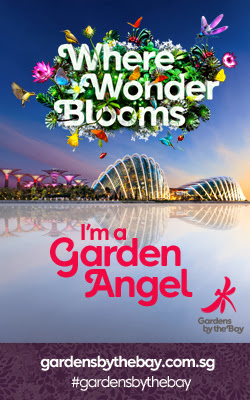It's been the longest time since Merlion Wayfarer stepped into a museum. Recently, on one of her days off, she decided to venture along the banks of the Singapore River, and right into the museum at Empress Place.
The Asian Civilisations Museum (ACM) showcases Singapore's diverse heritage by charting the exploration and history behind the people from around the region that have settled on Singapore's shores over the past two centuries.
Being the only museum in the region devoted to exploring the artistic heritage of Asia, especially the ancestral cultures of Singaporeans, it was founded in 1993, and in its present building by the Singapore River since 2003. On the ground floor, the Trade and the Exchange of Ideas gallery houses artefacts and artworks that tell stories of Singapore’s history as an emporium for global trade.
In the riverfront Khoo Teck Puat gallery, the famous Tang Shipwreck collection is located - A virtual time capsule of treasures from 9th-century China hidden from the world till its discovery in 1998. The adjoining Kwek Hong Png Wing houses the museum’s first contemporary art space. The third floor houses over 300 magnificent Chinese ceramics from the museum's collection. Other galleries in the ACM include the Ancient Religions Gallery and the Scholar in Chinese Culture gallery.
Merlion Wayfarer spent the most time on Level 2, which houses Faith & Belief galleries. These galleries present their origins in Asia, their spread across the continent by land and by sea, and their localisation each step of the way. Here are some snapshots of the photo-worthy artefacts:
Model Stupa
Gandhara, 3rd or 4th Century, Schist
This beautifully carved stupa is decorated on the bottom tier with images of the Buddha seated in meditation and flanked by two attendants. The Corinthian columns show how classical Mediterranean art influenced Gandhara. The lotus petals that decorate the dome are symbols of Buddha. The finial on top marks the vertical axis of the stupa and the position of the relic chamber inside.
Head of Bodhisattva
Gandhara, Around 4th Century, Terracotta
The face and curly hair show the powerful influence of the West on the development of Buddhist art. Ancient Greece and Rome played a significant role in the development of Gandhara (in present day Pakistan and Afghanistan).
Bodhisattvas wear jewellery, and have beards and moustaches, which distinguishes them from figures of the Buddha. The jewellery seen here is typical of the Gandhara period. A circular indent on his forehead, called an urna, is a mark of nobility and illumination; it would originally have been inlaid with a precious stone.
The sculpture was modelled with wet clay that was then fired. This technique allowed deep indentations and free forms, as evident in the beard and hair. Terracotta (literally, baked clay) allowed large statues to be assembled from several places.
Atlas
Gandhara, 3rd Century, Schist
In ancient Greek mythology, Atlas is a Titan who holds up the sky. Such figures were often placed with scenes from the Buddha's life. This shows how Western classical art was adopted to adorn Buddhist art in Gandhara.
Head of a Buddha
Thailand, Lan Na, 16th Century, Bronze
This Buddha, when it was complete, would have looked own serenely upon those who worshipped it. It was produced in Lan Na (Northern Thailand), a major bronze-casting centre, its prominent cranial bump (ushnisha) was originally lopped by a flame finial (now missing) similar to those on the two Sukothai Buddha images on display in this gallery.
As with Sukhothai, Lan Na was influenced by Sri Lankan Buddhism. Styles flowed between the various kingdoms, and Buddha images from Lan Na and Sukhothai share many similarities.
Influence also moved by less peaceful means : In the 15th century, Sawankhalok was captured by Tiloka, the Lan Na king, who then repulsed a number of attempts of Sukhothai to regain the city.
The Great Goddess
India, Madhya Pradesh, 11th Century (Paramara Dynasty), Sandstone
The Great Goddess has countless names and forms, though she is mostly depicted as Durga, the main focus of shakti worship (devotion to female power and energy). This ten-armed figure sits in the position of royal ease and is decorated with exquisite jewellery. The flying garland bearers indicate her divine status.
A remarkable example of art from the Paramara Dynasty (9th/10th to 14th century), the sculpture hails from Bijamandal Temple (now in ruins), originally dedicated to Charchika-Devi, a form of the goddess Durga.
Shield, Dayak of Kayan Tribe
Borneo, Early 20th Century, Wood, Pigments
The shield has an applied design showing the Tree of Life. Facing pairs of hornbills and crocodiles indicate the upper and middle spheres of the universe. The pairs of snakes top and bottom indicate the lower world. The handle on the reverse is surrounded by floral motifs.
Model of a Temple
Myanmar, Yangon, 1914, Silver
This model takes the form of a Burmese temple, showing how the British appropriated traditional forms to suit their own purposes. The base is decorated with scenes of logging and trading company buildings. The front plaque is inscribed:
"Presented to Berkeley John Byng Stephens Esquire by employees of the Bombay Burmah Trading Corporation Limited Rangoon on his retirement, December 1914"
At the time, the company was one of the largest in the region, with the concessions in colonial Burma, Java, Siam and southern India.
Mudras
The Meanings of the Buddha's Hand Gestures
Bhumisparsha Mudra
This is the most common mudra for seated images of the Buddha in Thailand. When the Buddha is touching his right hand to the ground - bhumisparsha mudra - he is "calling the earth to witness".
Near the end of his long meditation, the Buddha calls the earth goddess to witness his right to enlightenment, and for her to help defeat the armies of Mara, the demon trying to tempt and distract him.
Seated Buddha, Sukhothai Kingdom (Thailand), 15th or 16th Century
Dharmachakra Mudra
The Buddha's hands here are in dharmachakra mudra. This gesture signifies the "turning of the wheel of Buddhist Law". All the teachings of the Buddha make up Buddhist Law, and thus this gesture shows him teaching.
Buddha Teaching, Gandhara, 3rd or 4th Century
Abhaya Mudra
This hand gesture - abhaya mudra - signifies fearlessness. Sometimes you see Buddhas with both hands in abhaya mudra.
Walking Buddha, Sukhothai Kingdom (Thailand), 15th or 16th Century
Dhyana Mudra
This Buddha sits serenely with hands in dhyana mudra, the gesture of meditation.
Seated Buddha, Thailand, 19th or early 20th Century
The ACM is located at 1 Empress Place. For more information, read its website
here.






























